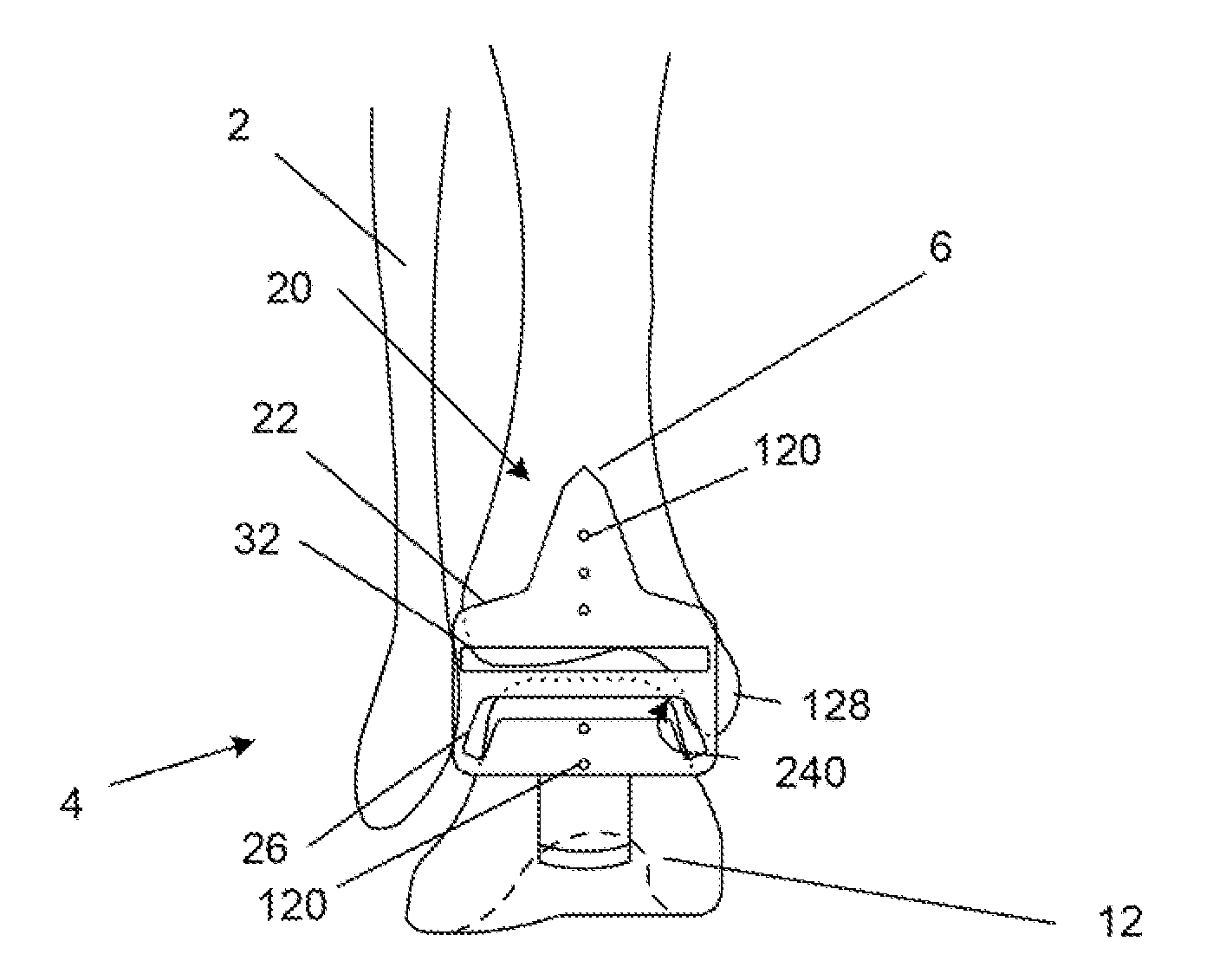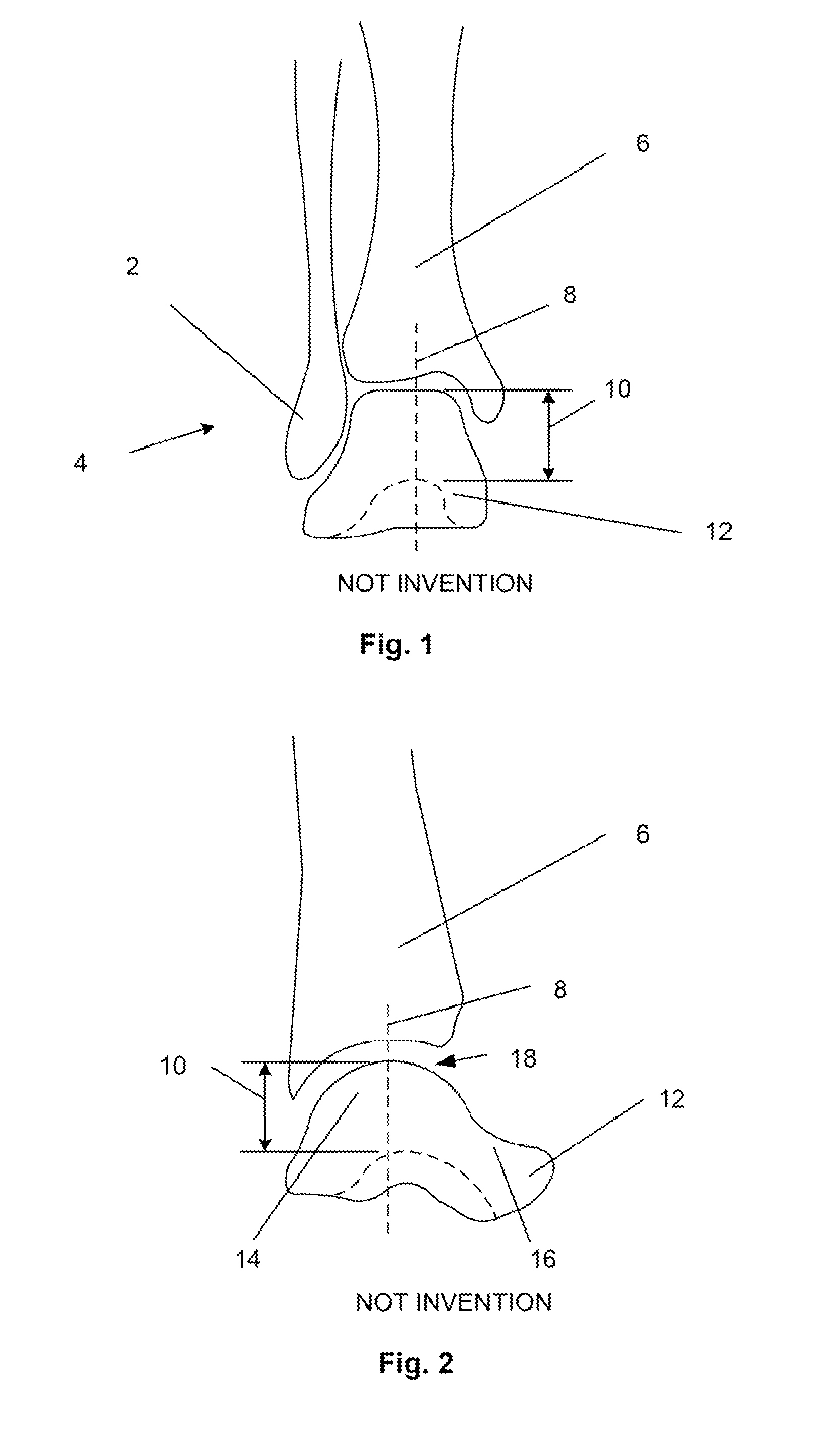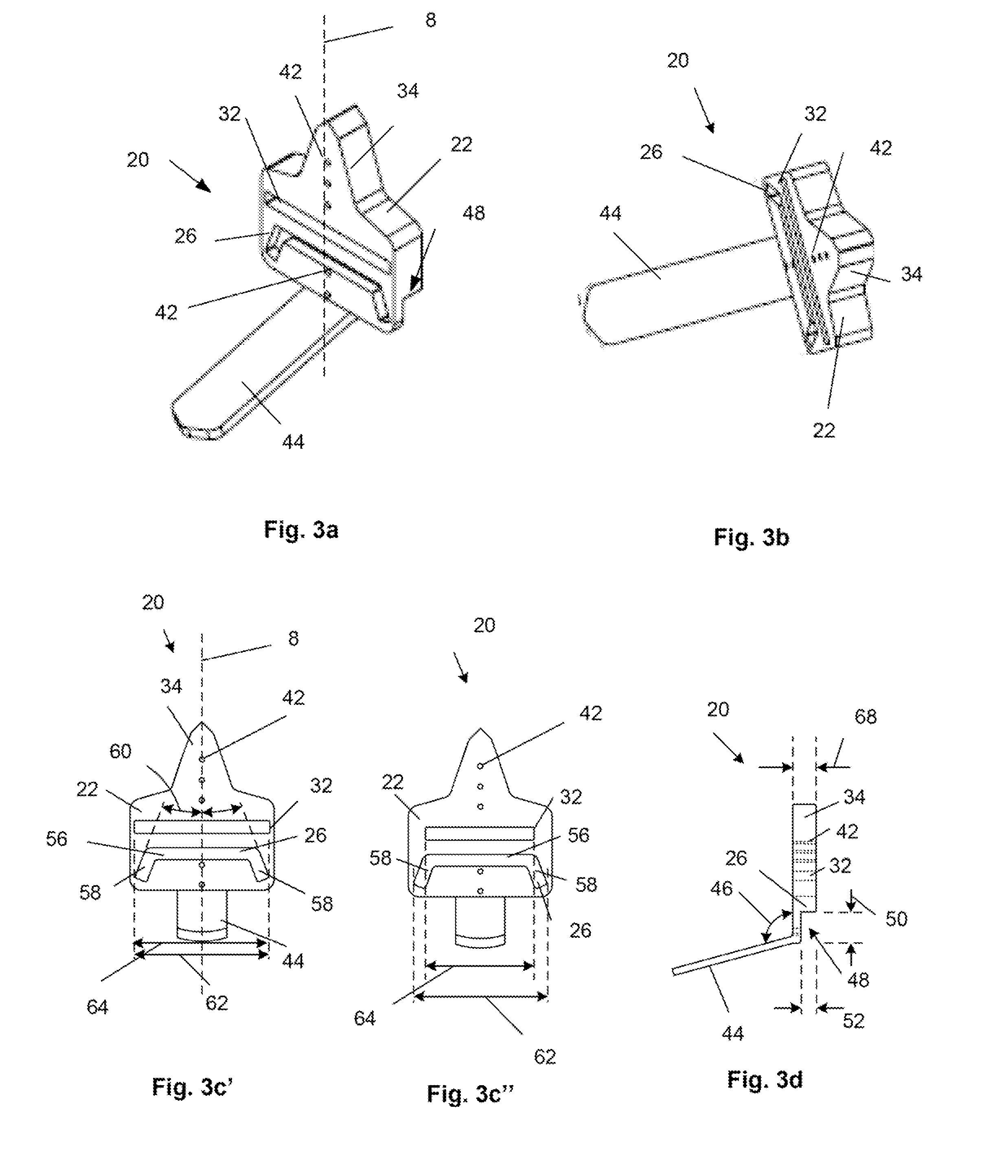Methods and devices for deploying biological implants
a biological implant and implant technology, applied in the field of biological implant deployment methods and devices, can solve the problems of uneven wear of the ankle, loss of mobility of the ankle, cartilage erosion and subsequent break down of the subchondral bone, etc., and achieve the effect of low toleran
- Summary
- Abstract
- Description
- Claims
- Application Information
AI Technical Summary
Benefits of technology
Problems solved by technology
Method used
Image
Examples
Embodiment Construction
[0047]FIGS. 3a, 3b and 3d illustrate an osteotomy guide 20 that can have a guide body 22 having a guide body thickness 68. A talus port or slot 26 and / or tibia port or slot 32 can pass through the entire guide body thickness 68. The talus and tibia slots 26, 32 can be configured to receive and direct one or more osteotomes. The guide body 22 can have a narrowing guide neck 34 at the superior end of the guide body 22. The guide body 22 can have one, two or more alignment holes 42 passing through the entire guide body thickness 68. The alignment holes 42 can be configured in one or more lines, for example along a horizontally-centered, vertical axis 8. A superior end of the guide body 22 can narrow along the vertical axis 8 into a guide neck 34. The guide neck 34 can have additional alignment holes 42.
[0048]The guide body thickness 68 can be from about 6.4 mm (0.25 in.) to about 38 mm (1.5 in.), for example about 19 mm (0.75 in.). The guide body 22 can be sufficiently thick to prevent...
PUM
 Login to View More
Login to View More Abstract
Description
Claims
Application Information
 Login to View More
Login to View More - R&D
- Intellectual Property
- Life Sciences
- Materials
- Tech Scout
- Unparalleled Data Quality
- Higher Quality Content
- 60% Fewer Hallucinations
Browse by: Latest US Patents, China's latest patents, Technical Efficacy Thesaurus, Application Domain, Technology Topic, Popular Technical Reports.
© 2025 PatSnap. All rights reserved.Legal|Privacy policy|Modern Slavery Act Transparency Statement|Sitemap|About US| Contact US: help@patsnap.com



